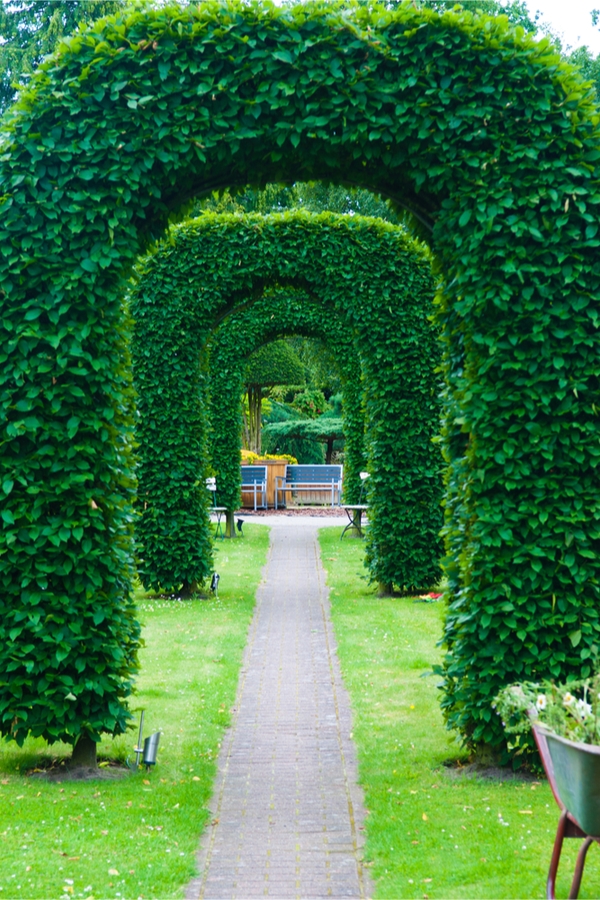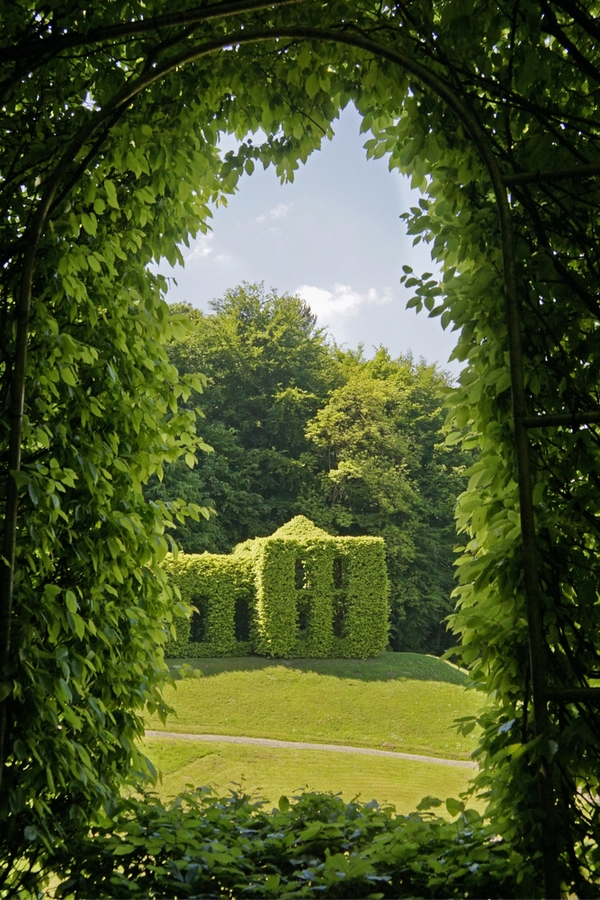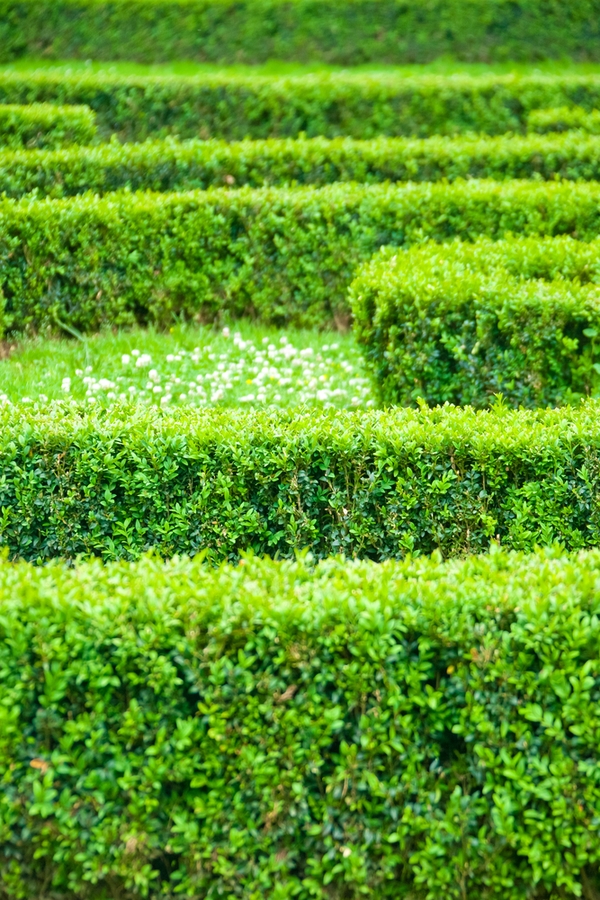
Do you enjoy growing hedges in your landscape? Then it’s time to hedge your bets on today’s hedge training tips! A hedge can add so much to your yard, and not just extra privacy. If you’ve never planted a hedge, stick around. We’ve got all you need to know about garden hedges, including hedge training tips. Happy hedging!

What Is A Hedge?
A hedge is a tree, shrub, or series of them, planted close together in a line to form a barrier or privacy screen. They are used to mark the edges of a property, provide interest in a landscape, set a wind block, or reduce noise from neighbors. There are many uses for a hedge!
What Plants Are Good For Hedges?
Many varieties of a holly shrub work great for hedges. They don’t require any special trimming, just that you prune them often. Boxwood is also an excellent choice, because of its versatility. Boxwood can grow tall to create a maze or a dense privacy screen. Glossy Abelia naturally forms an arching mound, so it’s not hard to train it to take advantage of its natural proclivity. Privet is another pretty plant great for a hedge. If you don’t train it, it naturally grows into a vase shape that is quite attractive.

Hedge Training Tips
The following tips are specifically for training a hedge to form an arch. Arched hedges are popular for their attractiveness. They bring a lot of interest to a landscape. It isn’t terribly hard to train one. Here are the hedge training tips to help you train an arched hedge:
- Use a fast-growing, taller hedge that is also pliable. Leyland cypress is a great choice!
- You will also need a metal arch and fast-setting concrete to anchor it securely into the ground.
- Leather strips are used to help secure the hedge to the metal arch as it grows. This doesn’t have to be expensive–try using some old belts. Just don’t use wire or other material that will cut into the limbs of your hedge and damage them.
- If your metal arch isn’t weather resistant, paint it with rust-resistant enamel paint to keep it rust-free.
- Plant your chosen shrubs with a space of at least 4 feet for your archway.
- Once the shrubs are about 6 feet tall, you can add the metal archway to its spot and begin training the hedge.
- Attach central limbs of the tree or shrub to the metal frame, using the leather belts.
Once you establish your arched hedge, keep pruning or trimming as necessary to maintain your desired shape.


Leave a Reply